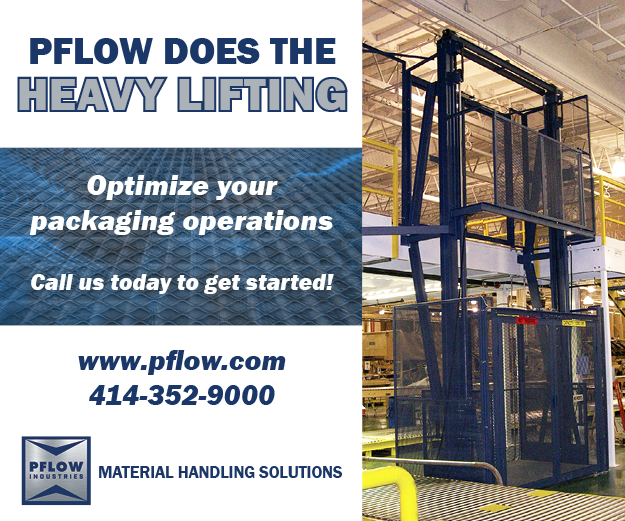Capping and Sealing Breakthroughs
New materials and technologies in the segment assist brands in achieving various goals.
By Liz Cuneo, Contributing Writer

The R1490 Adhesive has received FDA Food Contact Notification 1716, which means food packaging can feature the adhesive without a functional barrier between the label and food.
A key role of all packaging is to protect and contain the product inside, and prevent it from leaking, spilling and spoiling. The best way to do that is by ensuring a proper seal, or closure. Using the right cap, seal and equipment can help you do just that.
When discussing consumer-packaged goods (CPG) products, it’s no secret that packaged food makes up a large part of the segment. To make food packaging that much easier for CPGs, Avery Dennison releases its R1490 adhesive that has received direct food compliance from the FDA. The approval is a first-of-its-kind for the reclose label space and means that food packaging can use the adhesive without a functional barrier between the label and the food. It can be used in a wide range of food packaging applications such as deli meats, frozen meals, and fresh produce.“R1490 is a solvent acrylic which is FDA approved for direct contact and microwave use (FCN 1716). It is engineered to work on a broad range of substrates and delivers excellent adhesion rebuild, smooth peel back, and low odor,” says Laetitia Kasl, senior product manager at Avery Dennison.
The adhesive is designed for easy opening, as well as for multiple open and close uses, for maximum consumer convenience.
“A peel-reseal structure with R1490 can help brand owners deliver a high-quality consumer experience in two ways. By providing convenience: The ‘Healthy Living’ and ‘Experience More’ megatrends drive the need for convenient eating solutions without sacrificing flavors and textures. And when asked about food packaging features, consumers of all age groups highly rank resealability and ease of opening. By ensuring freshness: When designed with the proper levels of oxygen and barrier, the packaging can also support shelf life targets and ensure that the content stays fresh,” said Kasl.

The R1490 Adhesive has received FDA Food Contact Notification 1716, which means food packaging can feature the adhesive without a functional barrier between the label and food.
While convenience is important for consumers, sustainability is important for consumers, packagers and retailers alike. As more brands, as well as consumers, seek out eco-conscious packaging, Closure Systems International (CSI) introduces its 38mm D-KL linerless HDPE closure, the 38D-KL. The closure can be sourced with up to 40 percent PolyCycle®, CSI’s post-consumer recycled (PCR) HDPE resin, which is sourced from recycled milk containers (as well as other beverage containers). This provides an opportunity for closed loop packaging. Both the HDPE and the PolyCycle PCR version of CSI’s 38D-KL closure are 100 percent recyclable. The closure is commercially available for applications in non-carbonated cold- and ambient-filled beverages and liquid dairy markets.
No matter what you’re packaging, whether it is in a bottle, pouch, carton or box, a tight seal or closure is paramount to your package’s success. That’s why it is important to have an inspection system working to be sure the closure is in the right place, is securely closed and is doing its job.

The system efficiently detects and rejects incorrectly capped, damaged, or incompletely filled containers before they can proceed downstream and enter the marketplace.
To make sure that all as it should be, Silgan Equipment has made an upgrade to its popular 51R56 bottle and cap vision inspection system. The system inspects filled bottles for cocked, loose, skewed and missing caps, damaged or missing tamper-evidence bands and even low fill levels. The system efficiently detects and rejects incorrectly capped, damaged, or incompletely filled containers before they can proceed downstream and enter the marketplace.
The system has some upgrades to ensure better inspection functions, including a replacement of the previous cameras with high-resolution GigE Flir cameras and a move from the Windows 7 operating system to Windows 10. As a result, the system produces higher resolution images, improving inspection results, and processes those images more quickly.
If you’re looking for an inspection system that utilizes cutting-edge technology, the new Acquire Automation CapQ Vision Inspection System could meet your needs. This system employs artificial intelligence (AI) to increase the accuracy of bottle cap inspections. It features 360° inspection of capped containers. The system inspects for cap height, cap skew and raised or missing cap, the integrity of the tamper-evident band and even the correct color cap, as well as fill level.
The key differentiator for the CapQ system is its integration of AI into the cap inspection process. AI enables the system to ignore water droplets and plastic fragment shedding that can skew measurement results, leading to false rejects. Also, the system produces reports and audits data that support accurate ongoing and year-end production records and inventories, and it provides useful data for the user’s continuous Improvement program.
For your capping and sealing needs, consider some of the new technologies in the marketplace designed to provide you with not only a proper seal, or closure that addresses the trends of sustainability and convenience, but accurate inspection to ensure your package’s integrity.







